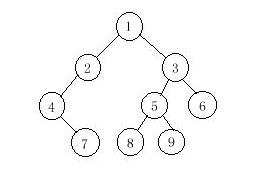标签:move panel out highlight const ges 位置 output ++

//ECUST luoyongjun
#include <bits/stdc++.h>
using namespace std;
const int N = 1010;
int pre[N], in[N], post[N]; //先序、中序、后序
int k;
struct node{
int value;
node *l, *r;
node(int value = 0, node *l = NULL, node *r = NULL):value(value), l(l), r(r){}
};
void buildtree(int l, int r, int &t, node* &root) { //建树
int flag = -1;
for(int i = l; i <= r; i++) //先序的第一个是根,找到对应的中序的位置
if(in[i] == pre[t]){
flag = i; break;
}
if(flag == -1) return; //结束
root = new node(in[flag]); //新建结点
t++;
if(flag > l) buildtree(l, flag - 1, t, root ->l);
if(flag < r) buildtree(flag + 1, r, t, root ->r);
}
void preorder (node *root){ //求先序序列
if(root != NULL){
post[k++] = root ->value; //输出
preorder (root ->l);
preorder (root ->r);
}
}
void inorder (node *root){ //求中序序列
if(root != NULL){
inorder (root ->l);
post[k++] = root ->value; //输出
inorder (root ->r);
}
}
void postorder (node *root){ //求后序序列
if(root != NULL){
postorder (root ->l);
postorder (root ->r);
post[k++] = root ->value; //输出
}
}
void remove_tree(node *root){ //释放空间
if(root == NULL) return;
remove_tree(root->l);
remove_tree(root->r);
delete root;
}
int main(){
int n;
while(~scanf("%d", &n)){
for(int i=1;i<=n;i++) scanf("%d", &pre[i]);
for(int j=1;j<=n;j++) scanf("%d", &in[j]);
node *root;
int t = 1;
buildtree(1, n, t, root);
k = 0; //记录结点个数
postorder(root);
for(int i=0;i<k;i++) printf("%d%c",post[i],i==k-1?‘\n‘:‘ ‘);
//作为验证,这里可以用preorder()和inorder()检查先序和中序遍历
remove_tree(root);
}
return 0;
}
标签:move panel out highlight const ges 位置 output ++
原文地址:https://www.cnblogs.com/lyj1/p/11516988.html